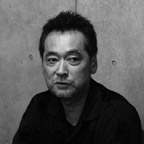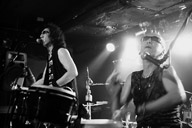Juror
Zeze Takahisa
 [Juror’s Statement]
[Juror’s Statement]
During my college years, among other activities, I was involved in organizing independent screenings of films produced by Ogawa Shinsuke’s documentary production group. At that time, I wanted to enter the film world, but documentary was the one area in which I was reluctant to get involved. I felt I was incapable of working the way Ogawa did, living where he was shooting, conducting his life alongside his subjects, and risking everything. Nonetheless, after graduation, when I was working part-time jobs and leading an uncertain existence myself, I went to Yamagata for about a week to work on Ogawa Productions’ Magino Village: A Tale with Sato Makoto. At the time, Sato was still slaving away at some production house, but some years later he would make his own film, Living on the River Agano. As for myself, I got my start in the world of pink films, where I had my directorial debut. Eventually, I was lured into producing documentaries for television. I was allowed to shoot with a small video camera, and I discovered that it was possible to make documentaries without risking your life. I also came to believe that there was not such a clear division between fiction and documentary. In both, excitement is to be found in the moments where we make discoveries about our world. Coming back this year to Yamagata, the home of Ogawa Productions, I’m looking forward to encountering all kinds of films. But in one sense I’m also afraid. Both Ogawa Shinsuke and Sato Makoto have left this world behind. It seems, after all, that the work of making documentaries may wear away at life.
| Zeze Takahisa Born in 1960 in Oita Prefecture. While attending the philosophy department of Kyoto University, he gained attention with his independently produced film Gyangu yo, muko wa hareteiru ka (1985). After passing through an apprenticeship as assistant director, he made his commercial filmmaking debut with Extracurricular Activity: Rape (1989). Since then, he has worked in a variety of media, from theatrical films to documentary, television, and video production. This year, his film Heaven’s Story (2010) won the FIPRESCI prize and the NETPAC award for best Asian film at the 61st Berlin International Film Festival, and his film Life Back Then (2011) won the Innovation Award at the 35th Montreal World Film Festival. |
Documentary Zuno Keisatsu
 JAPAN / 2009 / Japanese / Color, B&W / Blu-ray (SD) / 314 min
JAPAN / 2009 / Japanese / Color, B&W / Blu-ray (SD) / 314 min
Director: Zeze Takahisa
Planning: Suda Yuichi
Photography: Nishikubo Koichi, Ashizawa Akiko
Editing: Imai Toshihiro
Sound Editing: Arimoto Kenji
Producer: Ishige Eisuke
Source: Transformer, Inc.
www.transformer.co.jp
In December 1969, the band Zuno Keisatsu (The Brain Police) was formed, with PANTA and TOSHI as its core members. The camera follows them for three years leading up to the band’s reunion in 2008. This three-part documentary presents Zuno Keisatsu as they are, in the present-progressive tense, focusing on the two characters and their live performances.
Part One chronicles the band’s history as past and present PANTA and TOSHI cross paths. Part Two connects the postwar history of Japan with Palestinian issues via PANTA’s mother’s experiences during World War II. Part Three races towards the live performance at Seibu Auditorium, Kyoto University, in 2008.
